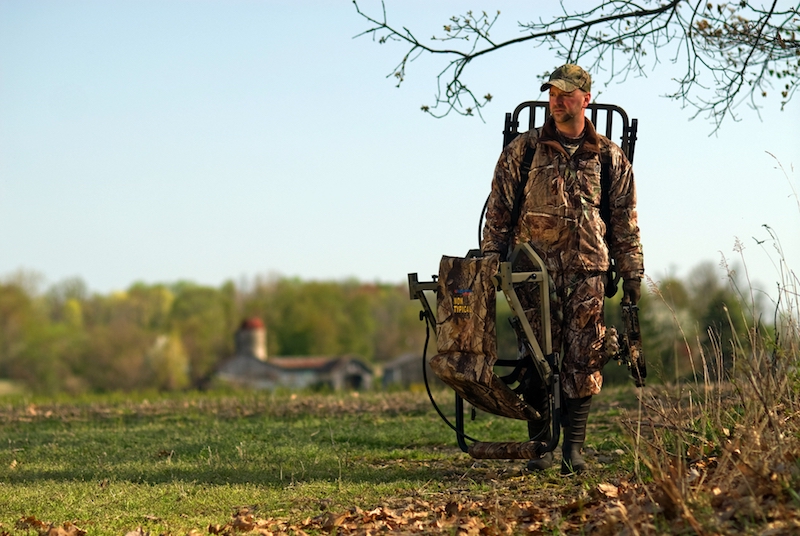Beep. Beep. Beep. Your alarm sounds. You roll out of bed, stretch, visit the bathroom, brush your teeth, dress, eat breakfast, and head to work. That’s your typical weekday morning, right?
Daily routines are fine for your home, office or classroom, but things work differently in the woods. Routines, patterns and other predictable traits hurt a bowhunter’s chances for success.
White-tailed deer are a prey species. They avoid predators, such as bears, wolves, coyotes and humans to survive and reproduce. They use every sense and survival skill to dodge death threats, whether it’s a broadhead or sharp canine teeth.
If deer see, hear or smell humans regularly in the same location, they’ll run, hide and change their movements and travel patterns to avoid the area. Research proves that deer quickly respond to hunting pressure in their domain.
Therefore, bowhunters must not use the same stands or hunt the same areas repeatedly. As predators, we must understand our prey’s patterns while not revealing our own patterns to them. Use these tips to avoid overhunting areas so deer can’t pattern you.
After finding a good spot, carefully decide when to hunt it. Weather affects deer behavior, so hunt your hotspot only in the right wind. After you’ve analyzed how deer use an area, place your stand or blind downwind of where you expect to see them.
If a deer is walking on a north-south trail leading from a bedding area to feeding site, place your stand east or west of the trail. In a west wind, hunt the east stand so the wind blows from the deer to you. Likewise, hunt the west stand in an east wind. Forecasts tell you which way the wind is coming from. For example, a west wind means it’s blowing from the west.
Also consider elements such as rain, air temperature and atmospheric pressure when deciding whether to hunt. Deer move less on extremely hot or cold days, during long and heavy rains, and when the air pressure is stagnant. Check weather forecasts to determine your best days to hunt, and hold out for the right conditions.
But even if conditions are right several days in a row, don’t hunt the same site repeatedly. Deer will pick up your scent and avoid the area. In general, the more you hunt a specific stand or area, the less productive it becomes.
If you’re itching to hunt but don’t want to burn out your honey hole, find other places to hunt. Try leasing land, hunting public land, or asking landowners for permission to hunt their property. Hunting access and hunting leases can be challenging to arrange, and public lands can attract other hunters, so craft fallback plans.
Consider out-of-state bowhunts, which provide great opportunities to explore new places and hunt animals you’ve never seen before. Use online maps, atlases or county plat books to find public lands, and study the state’s hunting regulations, which will vary from your home state. You must also buy a nonresident license, book a hotel or campsite, and try bowhunting game species on public lands.
You can also let your stands “rest” by participating in special-opportunity hunts on state or federally owned lands normally closed to hunting. These unique opportunities often include quota, lottery, cull or youth-only hunts. Other hunts might be restricted to military veterans or people with disabilities. Drawings for these hunts usually occur in spring and summer, so keep them in mind for next season.

Climbing stands are portable and allow you to change locations easily. Photo Credit: John Hafner
A portable platform, aka a climbing treestand, also gives hunters more options. Most hunters usually set up ladder or lock-on treestands in summer. Those strands often become “permanent” fixtures throughout the season because they can be difficult and time-consuming to move. Climbing treestands, however, are easy to set up, take down and carry around.
Climbing treestands are lightweight and include backpack straps, which make them portable for on-the-go bowhunters. They work best for climbing oak, pine or sweetgum trees whose thick, heavy bark isn’t slippery. Climbing stands bite into the bark and don’t slide. Prime trees for climbing are 16 to 24 inches in diameter.
By being equipped to hunt several sites you ensure scents left at your hotspots will soon fade, which makes deer feel safer.
No matter where you hunt, keep a low profile and leave no evidence you were there. Don’t leave wrappers, water bottles or other trash behind. Reduce your odor with scent-eliminating soaps, sprays and detergents. Do your best to make deer think you were never there. Besides, being a good land steward is every bowhunter’s responsibility.
If you follow these tips and “Leave No Trace” principles, deer will struggle patterning you. In turn, you’ll likely see more deer and earn more shooting opportunities. Good luck!